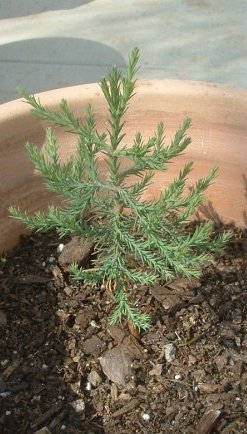
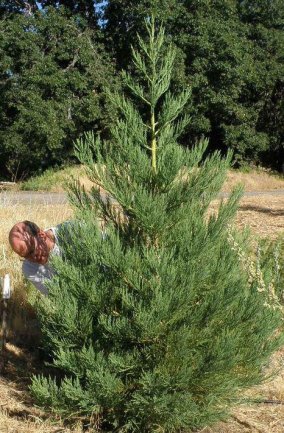

We have roughly two thousand cedars, firs, pine, black oak and California oak trees on our property that I manage. And, in many places we have thinned them out to permit healthy growth as well as to provide fire protection around the home. Since then, I've transplanted many dozen cedars and have a small grove of Sequoias that I've started.
Part of my motivation is to remain carbon negative, carbon neutral is for wimps, but I really do think that Sequoias are the most beautiful trees. Surpising to many people, we have a few on Palomar, they are the healthiest trees on the Mountain. [See the life cycle of carbon molecules here.]
Redwoods and Sequoias are not native to Palomar Mountain, but they will grow there. I've always loved Sequoias (Sequoiadendron giganteum), and decided to try and grow them from seed. Following about 15 months of effort with about 2,500 seeds that yielded ~100 seedlings, below left was all I had to show. One must have patience.
| Below left: One of my seedlings | Below center: One of my seedlings transplanted in October 2008 and shown in October 2011 | Below right:What the tree might look like in about 3,000 years |
 |
 |
 |
Eventually patience and perseverance pays off, as shown below:
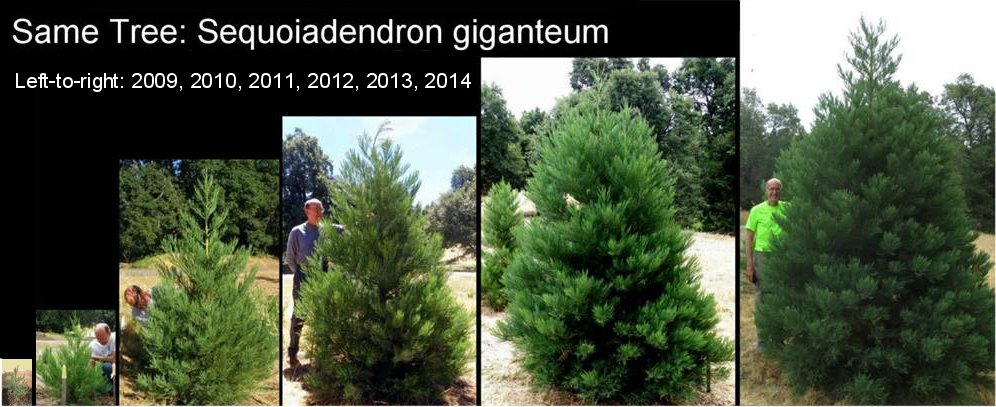
I guess I'm still green at raising seedlings, even with the advice of helpful mountain folks. Here's the procedure I've used:
(1) Start with several hundred seeds, there are a very few places you can purchase them, what I've done, or you find them around Palomar Observatory.
(2) Stratification (cold incubation) for germination. I soak the seeds overnight water, then spread the seeds over a wet paper towel. Fold the towel in half, then in half again, so that the seeds have three layers of paper on one side and one layer on the other. The paper is then placed in an air-tight baggie (with some trapped air included) and placed in the refrigerator for one month. Mist the seeds inside the bag once a week, as needed.
(3) Remove the bag and keep moist at room temperature.
(4) Take any germinated seeds and place in starter mix. The germinated seed is placed white root first into a hole in the starter mix. Cover the seed with a very small amount of seed starter. Water once/week, but be very careful not to overwater. Transplant when about 2-3" tall.
(5) Ask God to make the seeds grow and prosper, He knows I can't do it.
Below are some of my earlier inititatives on Palomar:
Sequoiadendron giganteum |
||
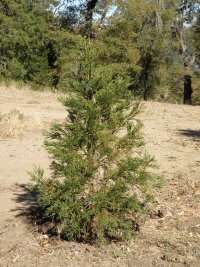 |
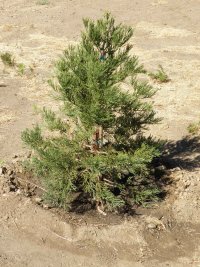 |
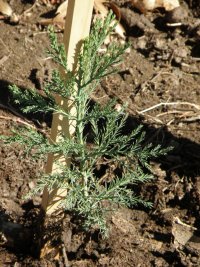 |
001100 |
001101 |
001102 |
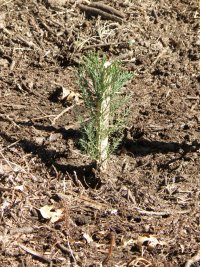 |
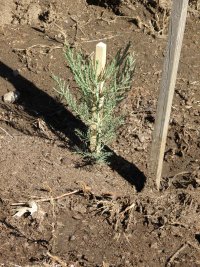 |
 |
001103 |
001104 |
001105 |
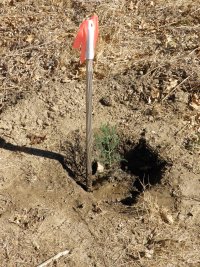 |
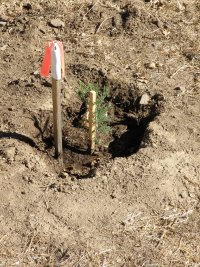 |
Four
seedlings in Poway |
Below: Seedlings from Joe Welker, Welker Grove Nursery (giant-sequoia.com) |
||
001106 |
001107 |
001113 |
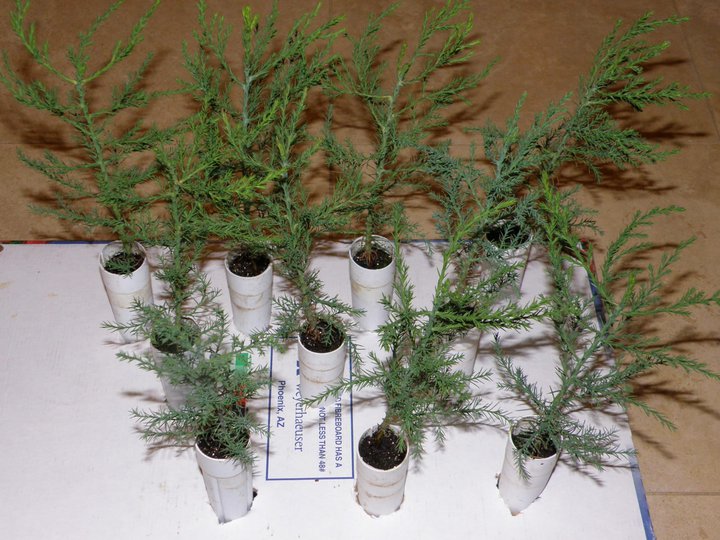 |
||
| (above and below) Ten new seedlings awaiting transplaning Spring 2011 [005200] | ||
 |
||
Below: Sequoia seedling eaten by gopher. They eat from the base up, requiring thick mesh below the surface, and deer eat from the top down, requiring mesh above the tree. After a few years, the trees are left alone, but it took a long time to figure out exactly what was eating them.
|
||
 |
||